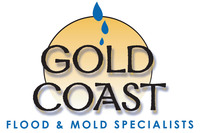Water Abatement, Structural Drying and Water Damage Restoration in San Diego
 Water abatement and restoration is a complicated task that requires a variety of techniques and equipment in order to ensure that the job is properly done. Depending on the size and scale of the emergency, different steps are taken in order to remove the water and cleanup any contaminated areas. The essential steps for water abatement to any water damage restoration job can be broken down as follows:
Water abatement and restoration is a complicated task that requires a variety of techniques and equipment in order to ensure that the job is properly done. Depending on the size and scale of the emergency, different steps are taken in order to remove the water and cleanup any contaminated areas. The essential steps for water abatement to any water damage restoration job can be broken down as follows:
* Flood Water Removal
* Moisture Mapping
* Mold Inspection and Removal
* Water Drying Techniques
Flood Water Removal for Water Abatement
Removing the source of the water is the first important step on any water damage restoration. Professional technicians should have a variety of equipment available at their disposal when they arrive on the scene. Usually, portable submergible water pumps are used to pump out water accumulation in structures. These pumps have a high threshold for extracting water and can usually dry out an entire submerged area in a short time, which is essential to stop the damage from spreading.
Moisture Mapping
Moisture mapping involves using detection equipment in order to obtain an approximate map for the moisture values on your property. Infrared is one of the more common methods used to obtain accurate readings, and properly trained technicians typically take high-quality digital photos as well to assess the extent of the damage. This step is crucial in order to get an idea of how bad the water damage may be and to take preliminary steps to prevent mold growth.
Mold Inspection and Removal
Residual water can lead to mold damage if unaddressed. Water damage professionals will use special detergents that sterilize the area and make conditions unfavorable for mold growth. Additionally, some restoration firms can use deodorization and ventilation as part of the process to get rid of any lingering odors and airborne contaminants.
Water Drying Techniques

These are some of the most common water drying techniques utilized by IICRC-certified professionals. Each technique is used according to the severity of the situation.
Air Movers – Also known as evaporators, air movers help the drying process by controlling humidity in a region and promote circulation of air. This helps on a broad level by removing liquids from porous materials – carpet, wood, drywall, plaster and more – leaving the more difficult trying to specialized equipment.
Dehumidifiers – Dehumidifiers remove the moisture from the air so lingering water in the area can be extracted from the area. These can be categorized broadly under refrigerant dehumidifiers and desiccant dehumidifiers.
Refrigerant dehumidifiers work under the principle of cooling the surrounding air. When this happens, the air loses its ability to retain water, causing condensation upon the cooling coils of the equipment. High-grade dehumidifiers work like a powerful version of consumer dehumidifiers, rapidly pulling the excess moisture from the air.
Desiccant dehumidifiers do not need cooling to remove water; instead, they use materials that naturally absorb moisture. When applied on a large scale, these machines can quickly extract humidity from the air in as effective a manner as refrigerants.
The type of equipment used depends on the company you hire and the conditions of the restoration job. Additional equipment specific to the homeowner’s region may be utilized, depending on the size of the restoration firm. Each water damage job is completely unique and requires proper analysis of the situation at hand to apply the proper equipment and techniques for removing water as quickly as possible.In our next article, we will cover the aftermath of a water restoration job, such as loss mitigation and contents restoration for valuables. Stay tuned until then!
Water Abatement and Structural Drying
For more information on water abatement, contact Joe Colombo, a certified water abatement specialist in San Diego, CA. and the owner of Gold Coast Flood Restorations. Call 888-373-9243 or email us at info@goldcoastflood.com
Serving San Diego and San Diego County for over 30 years with quality work and great service. We also service these cities – Chula Vista, El Cajon, La Mesa, Spring Valley, and Lakeside. Poway, Ramona, Alpine, Julian, Santee, Coronado, Imperial Beach, Pacific Beach, La Jolla, University City, Tierrasanta, Rancho Penasquitos, Rancho Bernardo, Rancho Santa Fe, Encinitas, Del Mar, Solana Beach, Leucadia, Sorrento Valley, Miramar, Mira Mesa, Scripps Ranch, Vista, Carlsbad, Oceanside, San Marcos, Lemon Grove, Bonita, Valley Center, Borrego Springs, Escondido, Fairbanks Ranch, Rancho San Diego 4S Ranch, Sabre Springs and Pine Valley.









Follow Us!